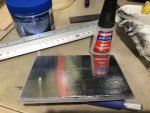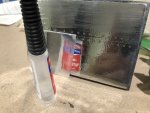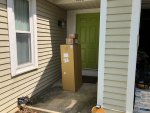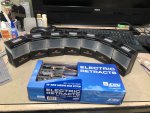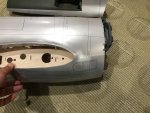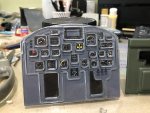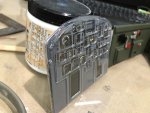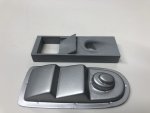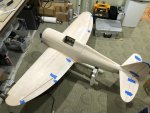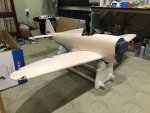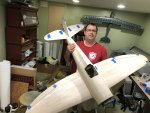After the TF Corsair stopped by the Horizon Hobby tent at Flite Fest, the guys there offered to sponsor a project. They asked me to go through their website and find something of interest and there was a LOT to choose from. Horizon is fully sponsoring this build so I want to be completely transparent that this is NOT a review of a product, but a building of one. I decided on the Jug for a number of reasons.
1: I really want to dress this girl up and show what you can really do with an ARF... What I am now calling a BARF (Builder's ARF).
2: Carl (wilmracer) picked one of these up and she is a sweet flying ship that really has no bad habits.
3: Aluminum finish. I want this to be a full-scale polished warbird that will sparkle and gleam at events to really stir up some conversation about learning to use this material.
4: Other goodies along the way as they come but I will be drawing on my gimmick experience from the Corsair build.
To start off, I took the rudder out of the box and only using a hair dryer I was able to peel away the vinyl covering with ease. While the covering is nice, the metallic finish will require a surface that is glassed for the best adhesion. Flite Metal has been a go-to covering for many Top Gun competition winners for many years now. As far as my research can tell, this is simply aluminum tape from the hardware store that is 6" or 12" wide. The kit appropriate for this aircraft was priced at $62 +shipping and I was able to source mine off Amazon for $23 +shipping. It is also thinner, therefore more lightweight, but I am hoping due to the thinness that application onto compound curves may be more forgiving.
Rivet application will be a nice reprieve from my usual technique. Heat will not be required to apply them and I have been able to source a steel tube of a smaller diameter that leaves an excellent impression in the aluminum. The rivets will be a more appropriate scale size.
In a sense, this will be an ARF-bash. I will be extensively going over this model to detail it out which is why I'm calling it a BARF. An otherwise 2-weekend leisurely assembly will quickly become many months of fun building. I hope that others will join in the build to ask questions and genuinely participate.
1: I really want to dress this girl up and show what you can really do with an ARF... What I am now calling a BARF (Builder's ARF).
2: Carl (wilmracer) picked one of these up and she is a sweet flying ship that really has no bad habits.
3: Aluminum finish. I want this to be a full-scale polished warbird that will sparkle and gleam at events to really stir up some conversation about learning to use this material.
4: Other goodies along the way as they come but I will be drawing on my gimmick experience from the Corsair build.
To start off, I took the rudder out of the box and only using a hair dryer I was able to peel away the vinyl covering with ease. While the covering is nice, the metallic finish will require a surface that is glassed for the best adhesion. Flite Metal has been a go-to covering for many Top Gun competition winners for many years now. As far as my research can tell, this is simply aluminum tape from the hardware store that is 6" or 12" wide. The kit appropriate for this aircraft was priced at $62 +shipping and I was able to source mine off Amazon for $23 +shipping. It is also thinner, therefore more lightweight, but I am hoping due to the thinness that application onto compound curves may be more forgiving.
Rivet application will be a nice reprieve from my usual technique. Heat will not be required to apply them and I have been able to source a steel tube of a smaller diameter that leaves an excellent impression in the aluminum. The rivets will be a more appropriate scale size.
In a sense, this will be an ARF-bash. I will be extensively going over this model to detail it out which is why I'm calling it a BARF. An otherwise 2-weekend leisurely assembly will quickly become many months of fun building. I hope that others will join in the build to ask questions and genuinely participate.



